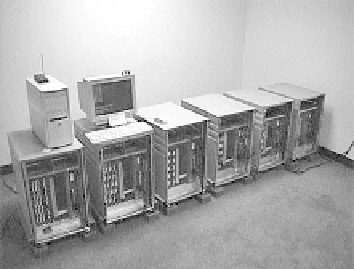Cryptography Reference
In-Depth Information
cheap. In the 1980s it would have been impossible to build a DES cracker with-
out spending many millions of dollars. It can be speculated that only government
agencies were willing to spend such an amount of money for code breaking.
Fig. 3.17
Deep Crack — the hardware exhaustive key-search machine that broke DES in 1998
(reproduced with permission from Paul Kocher)
DES brute-force attacks also provide an excellent case study for the continuing
decrease in hardware costs. In 2006, the
COPACOBANA (Cost-Optimized Parallel
Code-Breaker)
machine was built based on commercial integrated circuits by a team
of researchers from the Universities of Bochum and Kiel in Germany (the authors of
this topic were heavily involved in this effort). COPACOBANA allows one to break
DES with an average search time of less than 7 days. The interesting part of this
undertaking is that the machine could be built with hardware costs in the $10,000
range. Figure 3.18 shows a picture of COPACOBANA.
Fig. 3.18
COPACOBANA — A cost-optimized parallel code breaker
In summary, a key size of 56 bits is too short to encrypt confidential data nowa-
days. Hence, single DES should only be used for applications where only short-term
security is needed — say, a few hours — or where the value of the encrypted data is
very low. However, variants of DES, in particular 3DES, are still secure.


